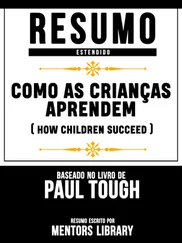Freelance translators and interpreters generally work for two types of clients: translation or interpreting agencies and direct clients. Translation agencies take on translation projects from end clients and subcontract the work to freelance translators, in exchange for a portion (often a significant portion) of the amount paid by the end client. In a best-case scenario, translation agencies allow their clients to focus on doing business and allow their freelance translators to focus on translating because the agency handles the non-translation aspects of the project. Translation agencies vary in quality. Some translators love working with agencies because it frees them up to concentrate on translation, while other translators avoid agencies because they prefer to have direct contact with their clients and don’t mind handling marketing, billing, and collections in exchange for the higher income that direct clients offer.
Direct clients are generally businesses, but might also be individuals, government agencies, universities or any other entity that needs translation services. Direct clients may choose to work with freelancers because they want a more personal relationship with their translator, a higher degree of consistency and confidentiality, or because they want to have direct contact with the person who’s working on their texts. As a translator, when you work with a direct client you handle every aspect of the project from the initial quote to the final invoicing and collections, and any issues that arise in between. Some translators enjoy this and some don’t; some are well-suited to it and some aren’t.
Before you start your freelance business, you should have an idea of the types of clients you would like to work with. Most beginning translators start by working with agencies, because they allow you to focus on translating, and because they can help you identify specializations that you enjoy and are good at. Working with direct clients can be very stressful for a beginning translator, but it may be something to consider if you have significant translation experience (for example if you previously worked as an in-house translator), or if you want to pursue a specialization that agencies don’t generally handle.
1.5 Your range of services
In the U.S., most translators work into their native language only. So, if you are a native English speaker and learned Japanese as a second language, you would generally translate from Japanese to English. This policy generally holds true in the languages for which there is a large pool of qualified translators. In smaller-diffusion languages, translators may work in both directions (for example from English into Farsi and Farsi into English). Some translators also consider themselves native speakers of two languages; if you grew up speaking one language at home and one language at school, you might have native-level skills in both languages. In general, if you are offering translation services into your non-native language, you should explain to prospective clients what makes you qualified to do that. Interpreters generally work in both directions (for example Spanish to English and English to Spanish), for purposes of efficiency; if interpreters worked in only one direction, clients would have to hire at least two interpreters for every job.
In addition to translation into your native language, you may wish to offer other services. Many translators do editing (generally defined as doing a quality check and revision of a translation by comparing it with the source document), proofreading (may involve comparing the translation to the source document or may involve reading the target document only) and glossary development (preparing a glossary for a certain project’s or client’s terms). Other services that translators may offer include transcription of audio materials, foreign language voiceover, alignment (matching the sentences in a source and target document so that they can be used in a translation memory program), cultural consulting, language lessons and more. Your range of services is really only limited by your skills and the demands of the market.
1.6 Pricing and income potential
Pricing is a huge issue for beginning and experienced translators alike. Many translators and interpreters base their rates on factors such as a) fear of ever losing a job because their rates are too high, and b) vague rumors and suspicion about what other translators and interpreters in their language combination are charging. This is a bad idea: the factors you should be considering include: a) how much you need or want to earn and how much you can or want to work; b) who your ideal clients are; c) how much you are interested in marketing/willing to market your translation services; d) what rates your target market will bear.
In general, translation agencies have specific rates or at least a rate range for each language pair, so if you want to work with the agency you will need to agree to the rate that the agency offers (but it’s always worth asking for more!). You should always have a target rate in mind, but be aware that agencies may have little or no flexibility in the rates that they pay for each language combination.
When you work with direct clients, it is up to you to decide what rates to propose or insist on. You need to first determine what your profitability point is. For example you can either determine how much you want to earn per year, then divide that by how many hours you want to work and by how many words you can translate per hour. In general, an experienced translator can produce between 400 and 600 finished words per hour, although there are many successful translators who fall outside this range, on both the high and low ends.
If you charge by the word, make sure to specify whether you will charge based on the source or target word count. For tasks such as editing and proofreading, many translators charge by the hour. For direct clients, you may wish to give a total price for an entire project rather than breaking down your price by the word or hour.
1.7 What you need to get started
Most freelance translators work from home. For a functional translation home office, you need a dependable computer that you back up regularly, a high-speed Internet connection, and a way to receive business phone calls. As technology improves, translators and interpreters have many more choices for how to set up an office: some translators work from an office that looks like a traditional office, with a desktop computer, multiple large monitors and a dedicated business phone line. Others work from co-working offices which offer the flexibility of working from home, plus the social aspects of working in an office. Still other translators have a totally mobile office setup with a laptop computer, electronic dictionaries and even a folding external monitor. If you use a laptop computer as your primary work computer (which I’ve done for about the past three years), make sure that a) you have an ergonomic setup, probably including an external keyboard and mouse, and b) your laptop is completely backed up, preferably using a “set it and forget it” syncing program that runs whenever your computer is online.
You will also need office software, a way to keep accounting records and possibly a translation environment tool or translation memory software. Before you invest in translation-specific software, make sure that you need it and that you know which tool best fits your needs. See Chapter 7 for lots more information on translation technology!
As a freelancer in the US, you can either work as a sole proprietor or as a corporation. If you are a sole proprietor, you declare your income on the IRS Schedule C form and pay self-employment tax on everything that you earn, minus your business expenses. In most states you don’t need a business license to work as a freelancer, but check with your state government (generally the state Secretary of State’s office) to make sure.
Читать дальше
![Коринн МакКей How to Succeed as a Freelance Translator [calibre 3.46.0] обложка книги](/books/402693/korinn-makkej-how-to-succeed-as-a-freelance-transl-cover.webp)


![Джон Ирвинг - Našlė vieneriems metams [calibre]](/books/384320/dzhon-irving-naŠle-vieneriems-metams-calibre-thumb.webp)
![Джонатан Димблби - Barbarossa - How Hitler Lost the War [calibre]](/books/385421/dzhonatan-dimblbi-barbarossa-how-hitler-lost-the-w-thumb.webp)







